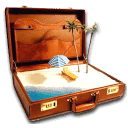
If you have dived in Papua New Guinea before, please share your experiences: Dive spots you would recommend, which Dive Center you used, Fishes & Diving, Visibility, Currents, etc. Please post your comments in the section below, by doing so you will help fellow divers to plan their next trip

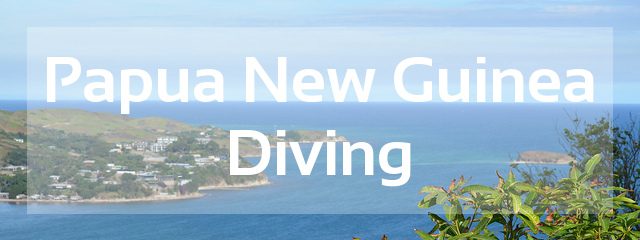
Banner photo credit: eGuide Travel
Papua New Guinea (PNG), has been called the wild wild west of diving. Some attribute the saying to the seemly unstable law and order situation. However, expat divers, refer to it as the untamed beauty of the underwater wilderness. Papua New Guinea is located in what is called the Rim of Fire, a highly volcanic active ring around the Pacific Ocean. Actually, Papua New Guinea shares its main island with the province of Papua, Indonesia.
Also, the country forms one of the boundaries of the Coral Triangle, which has the greatest diversity of marine life in the world. Indeed, the fauna is diverse, but so is the flora. Thus, you will find that you can try just about every type of dive in the region. For example, Papua New Guinea is the birthplace of the term muck diving and the heated black sand dive sites will leave you with only great memories. Other countries forming the coral triangle are Indonesia, the Philippines, the Solomon Islands and Malaysia.

Diving in Port Moresby © 2017 Papua New Guinea Tourism Promotion Authority
The waters around PNG include parts of the Bismarck, Coral and Solomon Seas. The difficulties of reaching some of the areas translate to only dedicated divers traveling to many of the locations. It’s great as it leads to uncrowded diving. For example, diving cruises and liveaboard vessels seldom have to share a dive site with another liveaboard. Even resort-based dive boats are often alone on the dive sites they visit. Plus, diving is done from smaller dive boats and no massive “cattle” boat operates in Papua New Guinea.
In this page you will find more detailed information about scuba diving in Papua New Guinea.
Table of contents
Best Dive Review
Papua New Guinea is often no more than a name for most people, even divers. The country has a landmass of 452,860 square kilometers (174,850 square miles). Plus, much of that landmass consists in jungles that the western man has never seen. Also, scientists believe that there are tribes within the country that have never been encountered by outsiders.
Moreover, when it comes to the seaside, Papua New Guinea has an estimated 52,000 square kilometers/ 20,000 sq. miles of reef systems. Diving wise, lots of places are very interesting, and the good news is that despite the limited land access, the country has a correct airport network. Indeed, you’ll be able to make it to most of the best diving sites in Papua New Guinea, which we highlight below:
-
-
Port Moresby is on the main island and has the only international airport in the country so all tourists that arrive by air pass here. Most of them head directly out to some of the other dive destinations in the country. Port Moresby does have some outstanding diving in its own right and deserves at least a few days. Nateara Reef is a barrier reef within an easy reach from the port. Along the reef are a variety of dive sites, with some being on the deeper side, and others in the lagoon. Also, the dive site selection includes some wrecks.
-
The Milne Bay Province is the most popular of the dive destinations and is also located on the main island. Indeed, it is the area that has put Papua New Guinea on the world’s best scuba diving map. The BlackJack dive site is a B-17 that is considered the best aircraft dive site in PNG and is often on the list of best aircraft wreck sites in the world.
-
Kimbe Bay is located on New Britain Island, which is the largest of the islands after New Guinea. The island is volcanic, with many active volcanoes. As for Kimbe Bay, it is a very large area, offering a wide range of scuba diving opportunities. Indeed, the varied underwater seascape allows for diversity and much fun for the divers. Plus, the Witu group of volcanic islands is dived from Kimbe Bay as well as the other islands in the area.
-
Rabaul and the Duke of York Islands are also a part of New Britain province but at the opposite end of the island from Kimbe Bay. Indeed, Rabaul is located on the rim of a caldera with Simpson Harbor, which is a natural harbor. During WWII, this area became a major Japanese military base and attacks are said to have sunk over 50 ships in the harbor. The location of most of them has been lost to time or buried under ash from an eruption in 1944. Still, there are at least 10 wrecks in the harbor that are known and dived.
-
Kavieng is located at the northern tip of New Ireland Island and offers mostly wreck diving. Also, the Bismark seaside of the island offer great reef diving. Plus, both the Pacific Ocean and the Bismark sides have large pelagic year-round. The Albatross Passage is considered the signature dive for the area. Strong current in the channel between two islands creates a world-class drift dive.
-
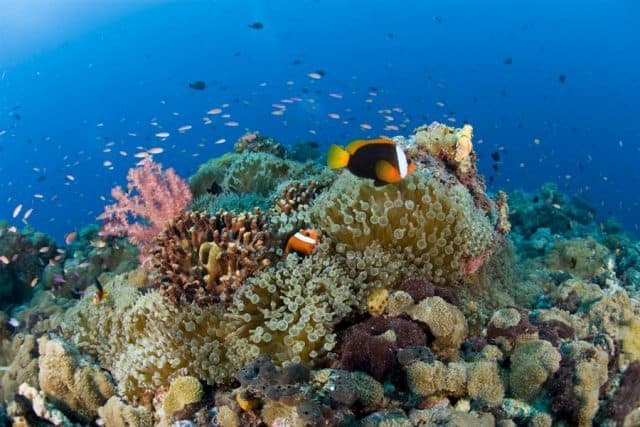
Diving in Tufi, Papua New Guinea © 2017 Papua New Guinea Tourism Promotion Authority
How to dive Papua New Guinea?
The main diving areas shown above each have dive resorts that will provide you the means to dive with local guides. Most divers staying on land will find that it is much easier and way more convenient to stay at a dive resort or accommodations recommended by a dive operator.
The best option for PNG is often sailing on one of the liveaboards. Indeed, it makes it easy to experiment with lots of diving each day, but it also takes you to locations where no one else is diving.
Best time to dive in Papua New Guinea
Diving is great year-round, especially when it comes to the Solomon Sea. However, each region and sea have their specifications, which we detail for you below:
- May to November is the best time to scuba dive around the Bismarck Sea.
- The South Pacific and the Coral Sea areas are best dived in December and all the way through April.
- Milne Bay, which is located in the middle between the Solomon Sea and the Coral Sea, is best dived from September through April or May. Plus, the manta season in Milne Bay is mostly the month of September.
Top liveaboards in Papua New Guinea according to divers reviews
Dive courses
While there are many dive sites open to beginning divers, it would perhaps be better to learn to dive and getting some experience before coming to Papua New Guinea.
Moreover, the destination is excellent for wreck divers and drift divers. So, if you do not have these certifications, they are a good choice to learn here. Also, the underwater photography is outstanding in the region. Make sure you bring your underwater camera, and maybe even take a photography course if you would like to develop your photographer’s skills!
Scuba Diving conditions
The water temperatures in Papua New Guinea definitely offer warm water diving all-year-round! Indeed, you can expect a water temperature within the range of 25-30°C (77-87°F) in most areas.
As for the visibility, it is generally way over the 30 meters (100 ft) range except for the muck diving sites. Plus, coastal sites might have reduced visibility but generally still within the 20 to 30 meters range.
Snorkelling in Papua New Guinea
Papua New Guinea has many dive sites that would be good for snorkeling. The country is not known particularly for its beaches and shore diving, but there is a fair share of house reef to explore. Thus, we can guess that the number of opportunities to snorkel might be quite limited, if not on a scuba diving cruise or daily boat trips.
Fishes and Coral
As mentioned before, Papua New Guinea is part of the coral triangle, thus home to a great deal of marine life. Indeed, you can be assured of seeing more species of marine life that you can keep track of! Of course, marine life density and diversity vary between different sites. For example, sites near deep water will have abundant pelagic species. As for shipwrecks sites and natural reefs, they will be overwhelmed with reef fishes. Also, turtles, marine mammals, and some sharks can be found on most dive sites.
Diving Safety
If you are planning an upcoming dive trip or travelling to Papua New Guinea, it is a really good idea to invest in travel insurance for scuba diving, because you never know what could happen and when you might need it (because accidents do happen!). I recommend this diving insurance as they offer worldwide coverage and focus on providing scuba divers a quality insurance and medical assistance service.
Papua New Guinea is a destination for the dedicated diver. Indeed, the remoteness of Papua New Guinea’s islands can be a challenge for many. Yet, once you arrive at your dive resort or aboard your scuba diving cruise, and slip into the water the first time, you will see it was well worth the effort and time spent traveling!
Photos Papua New Guinea
Travel Guide
Now that you know all about the underwater world, you might want to start planning your scuba holiday! Check out our Papua New Guinea Travel Review for information about how to get there, activities and excursions, where to stay, and more.

 Destinations
Destinations





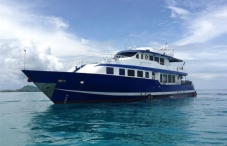
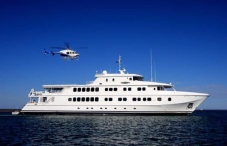
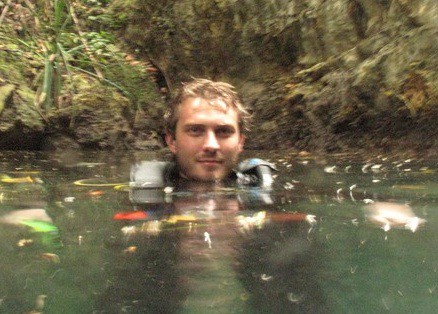




Planet channel, Kavieng would have to be the best dive in PNG., yes Albatross is good but doesnt hold a candle to Planet. I have dove it many times and it is an amazing dive. There were some issues with the local land owners but I believe that has been resolved. Get the currents right, be lucky enough to have reasonable vis and you will be blown away at the fish life and coral.
Hi Paul! I simply want to thank you for taking the time to share your review of diving in Papua New Guinea on Divezone! Sounds like you’ve had a great time, which is amazing!
Safe bubbles, always!
You are most welcome, may I suggest to you that you update your article on PNG as there are quite a few misleading statements.
There is very good year round diving in PNG, Milne Bay best from October through to perhaps May, then very wet and windy, Port Moresby including Tufi almost the same. The northern regions including the island are probably best from April through to November but year round diving is ok in most parts of the northern region. Where Milne Bay has great diving New Britain is at least as good if not better, I think the further north you get the better the under water visibility. Water temp gets down to 25 C in the south in June and as high as 31 C in the northern regions but this is rare. Also New Ireland does have a few wrecks but there are lots of great dive sites but mostly out of Kavieng, the passages between New Ireland and New Hanover are sensational, there are several very good sites on New Hanover including an awesome shallow ship wreck. I think New Britain and those dive sites accessed from this region have the best mix of everything. Madang also quite good, Wewak needs exploring and the satellite islands and reefs closer to the equator generally have great viz and some very good diving.
Hi Paul,
We had this page reviewed as, indeed, there were misleading facts on it. Thank you for pointing it out!
Wishing you the best bubbles, always!
Scuba diving in Rabaul and Kokopo area is great . Dive shop located inside Kokopo beach Bungalows Resort called Rabaul Dive Adventures is a local provider of services.
Diving can be done either closer to volcano on the sites like plane wrecks or ship wrecks from WW2 or at walls in between Duke of York islands where visibility can be between 10-30 m on a normal day .
Groups are small, divers are very few and because of that every time you go out, it feels like its the only boat on the sea.
Also in Kokopo there is is a spot where nearly every day 50-200 spinner dolphins in a pod cruise around in mornings and can be seen easily from boat . Unfortunately during a dive as spinners are very shy .
All the dives are accessible for all levels and also dive courses are provided .
Dive site list and photos can be seen here: LINK REMOVED